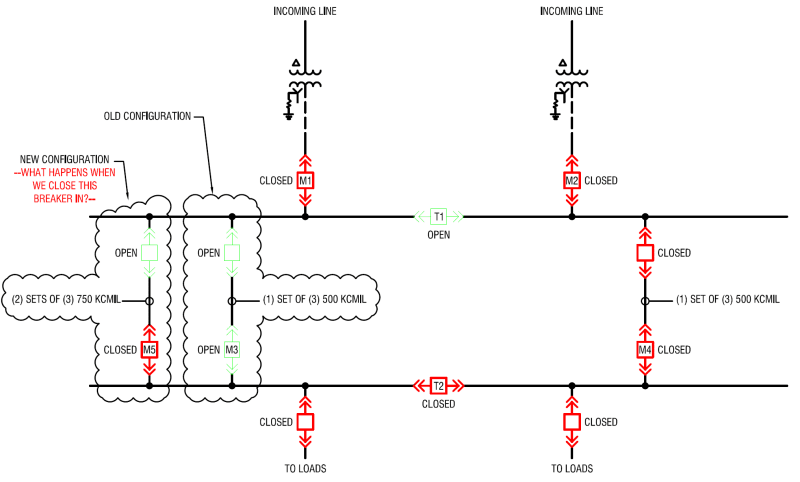We have a situation where we are planning to parallel conductors of different length and characteristics.
We have a 15kV M-T-M switchgear with paralleled transformers (automatic tap changer controls fully commissioned for paralleling), but the gear is run with the tie normally open. This gear feeds a downstream M-T-M gear which is also run with the tie normally open. We're doing a capacity upgrade on the feeders. In order to cut-in the new feeder, we will be closing the downstream tie, opening one of the old feeders (500 MCM, 1000'), and closing in one of the new feeders (2-750 MCM, 700'). We will then open the downstream tie.
My question is this: what happens when we parallel these 15kV feeders with different characteristics? I believe it will be a simple current divider (the larger feeder will see more current than the smaller feeder), but I need a sanity check.

We have a 15kV M-T-M switchgear with paralleled transformers (automatic tap changer controls fully commissioned for paralleling), but the gear is run with the tie normally open. This gear feeds a downstream M-T-M gear which is also run with the tie normally open. We're doing a capacity upgrade on the feeders. In order to cut-in the new feeder, we will be closing the downstream tie, opening one of the old feeders (500 MCM, 1000'), and closing in one of the new feeders (2-750 MCM, 700'). We will then open the downstream tie.
My question is this: what happens when we parallel these 15kV feeders with different characteristics? I believe it will be a simple current divider (the larger feeder will see more current than the smaller feeder), but I need a sanity check.

